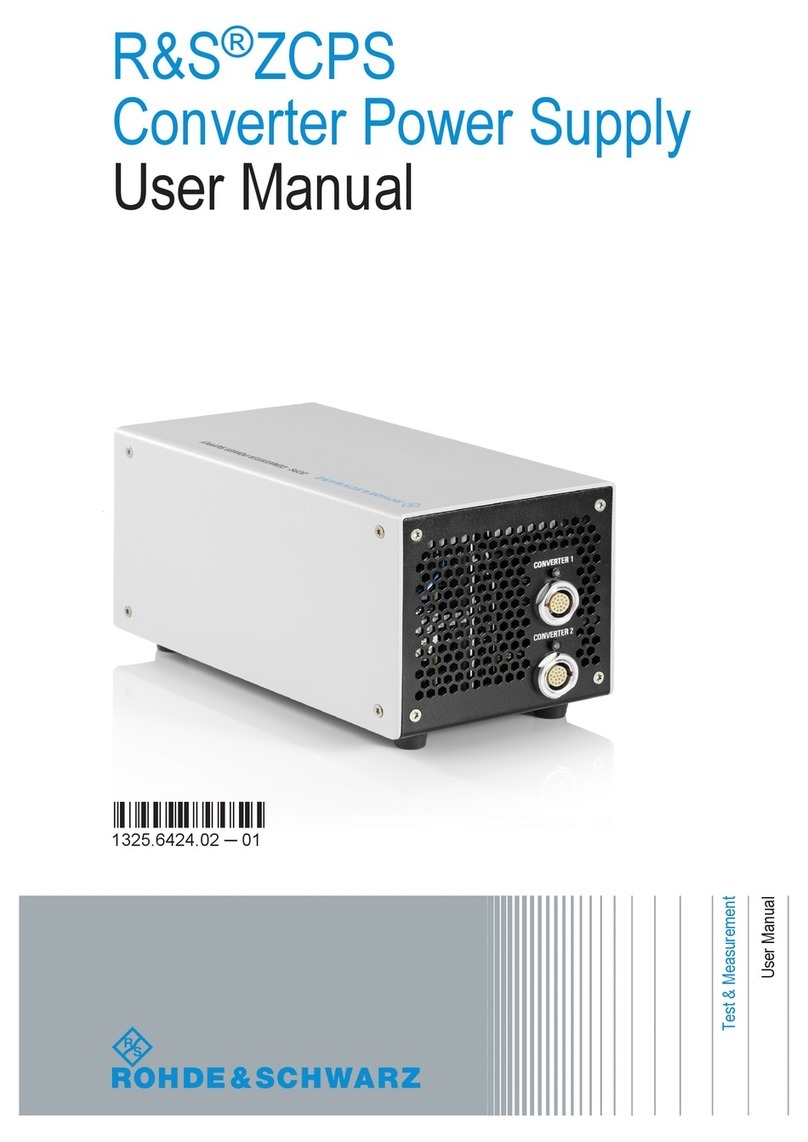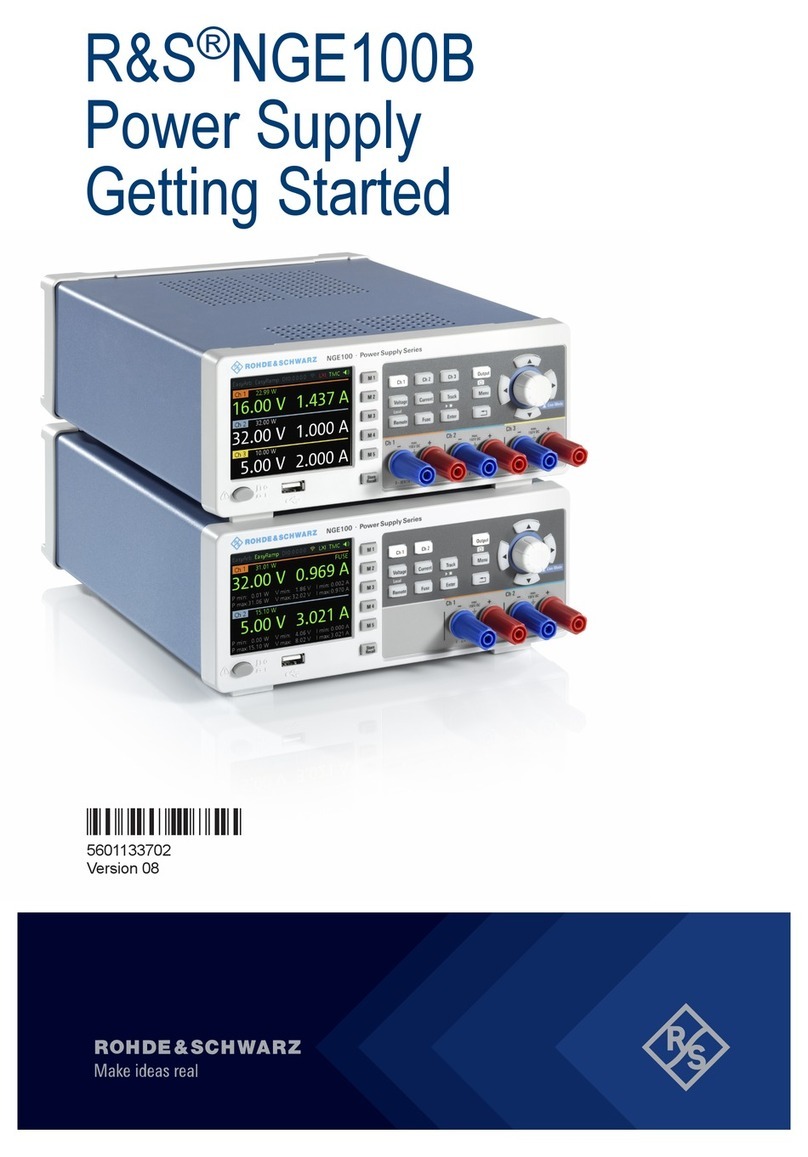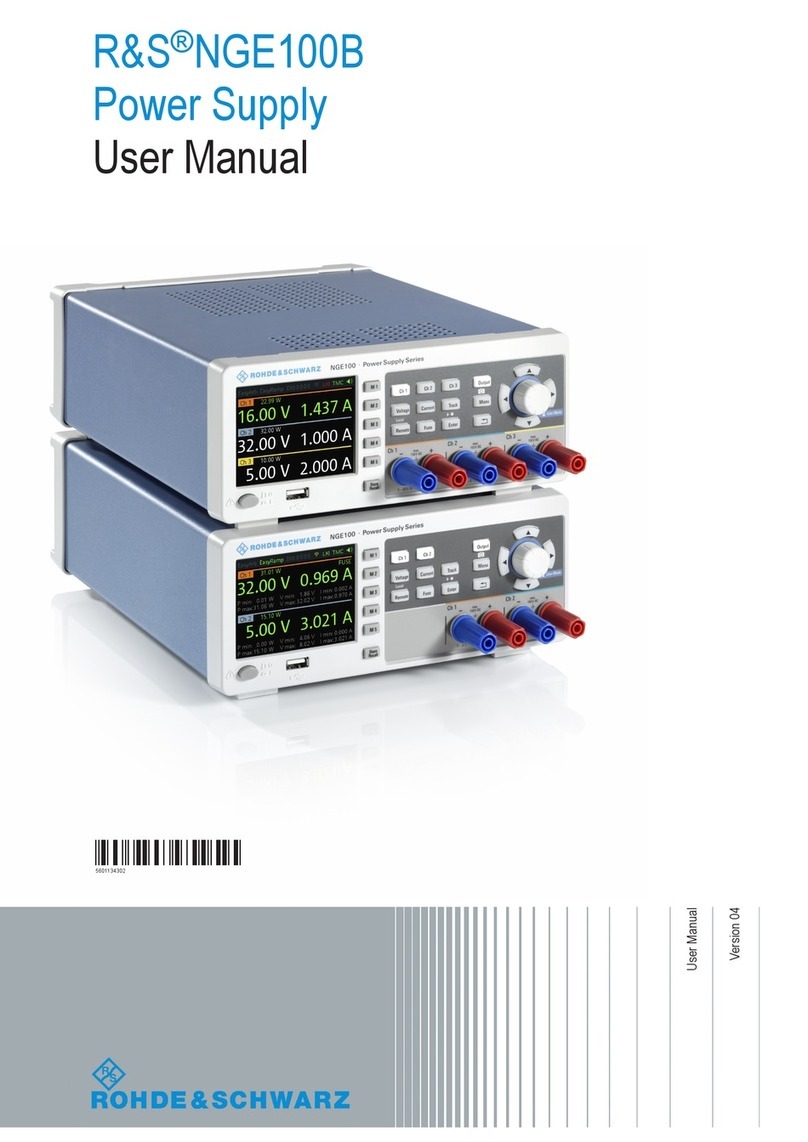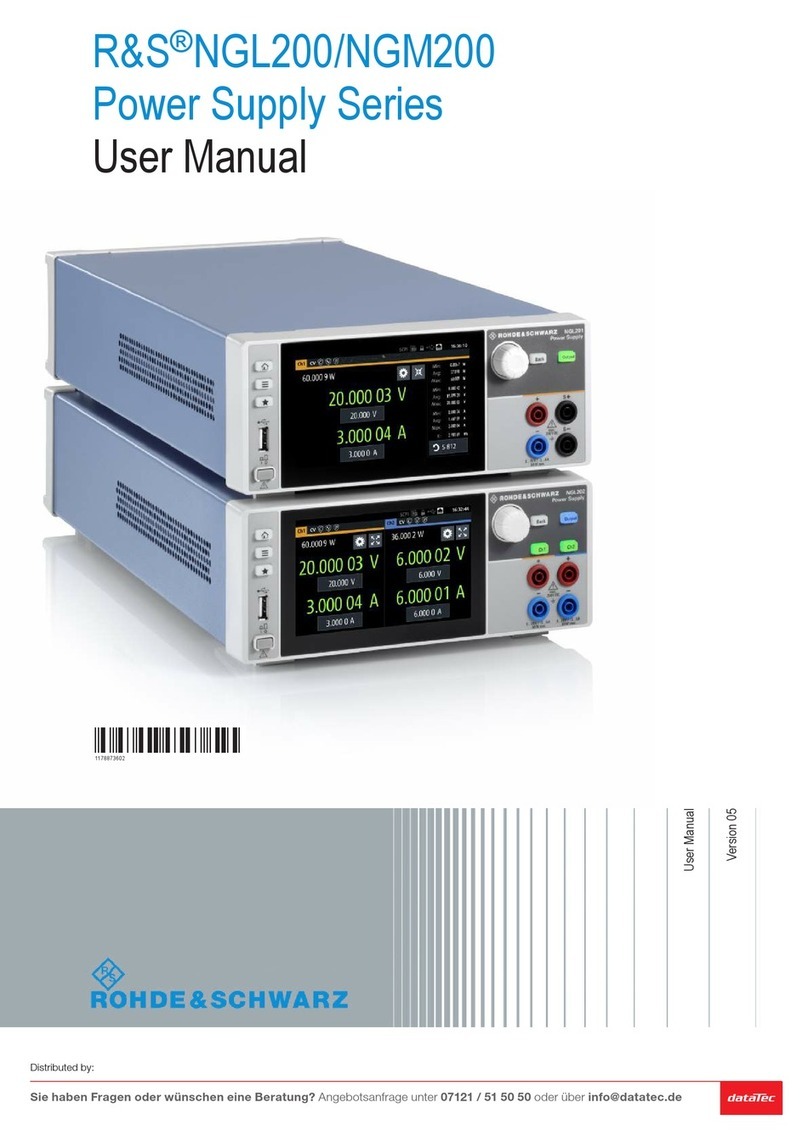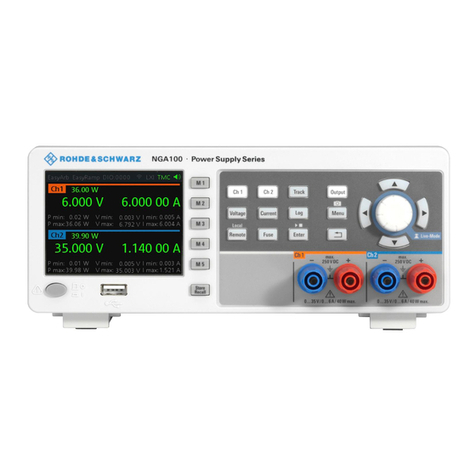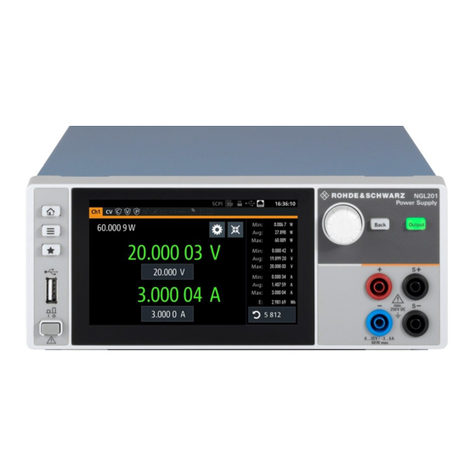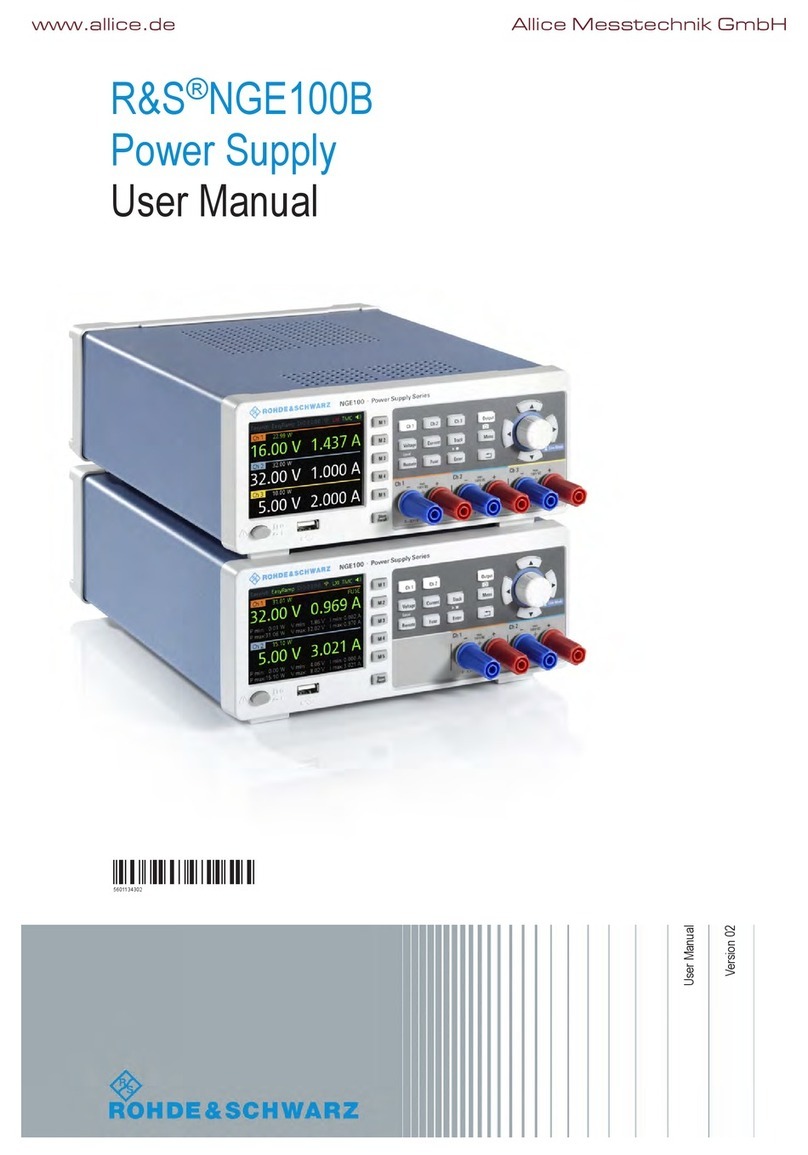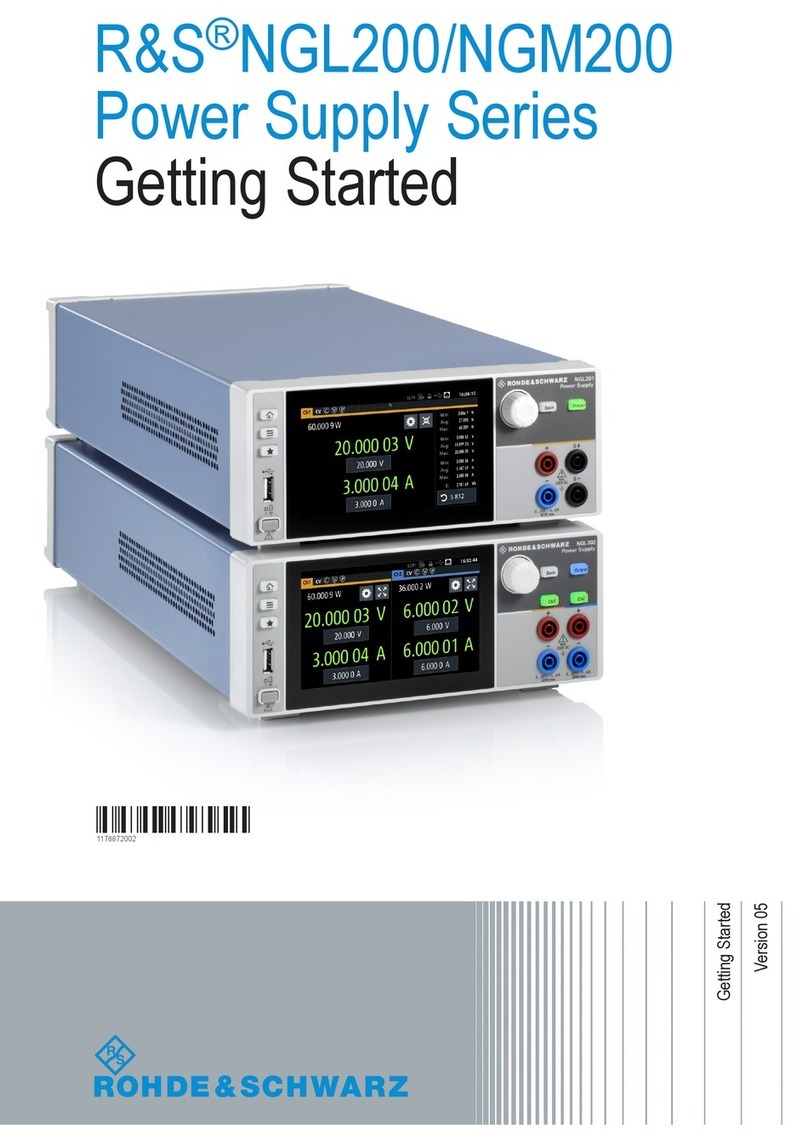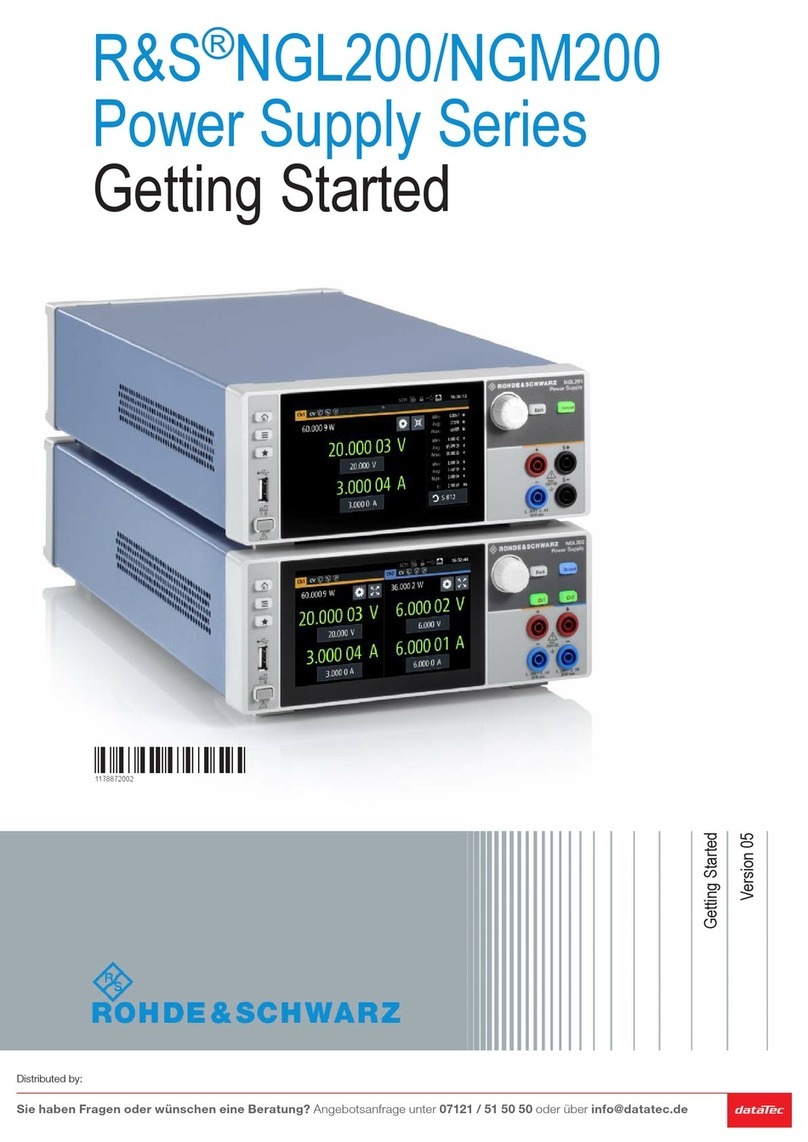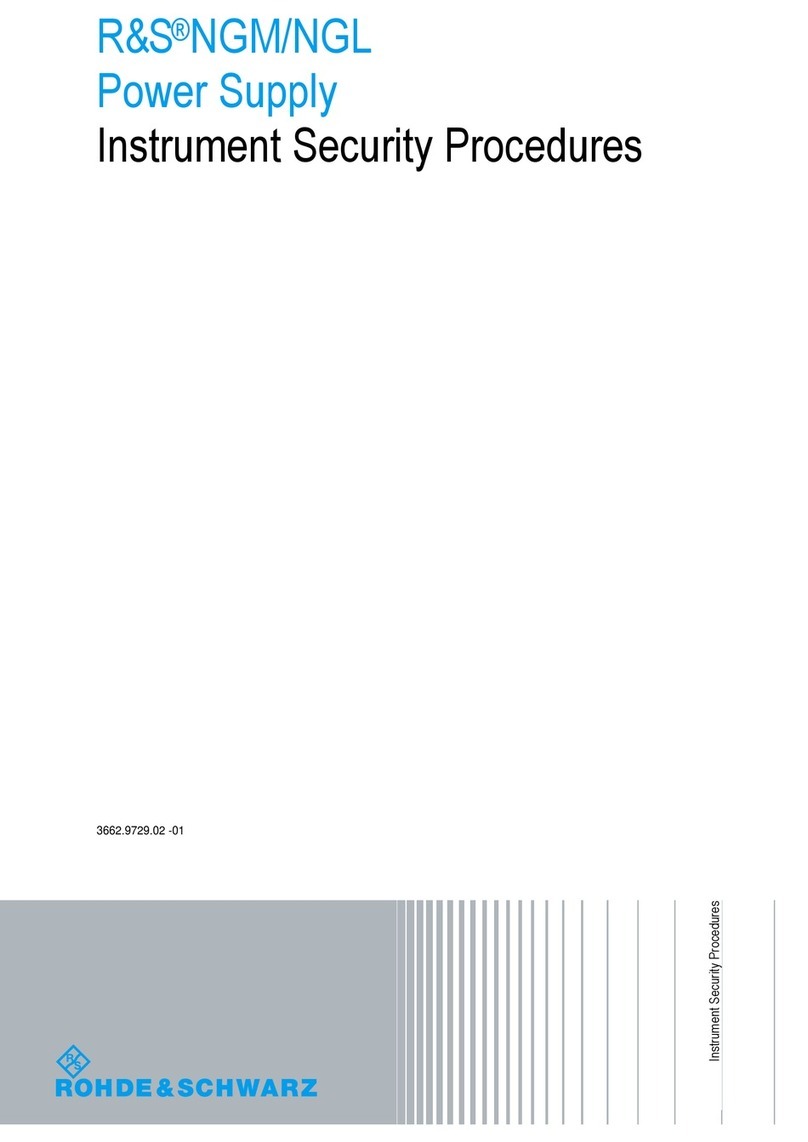
Contents
R&S®NGE100B
4User Manual 5601.1343.02 ─ 09
4.2.2 Switching on the instrument.......................................................................................... 24
4.3 Trying out the instrument...........................................................................................25
4.3.1 Selecting the channels.................................................................................................. 25
4.3.2 Setting the output voltage and current limit...................................................................25
4.3.3 Activating the channels output...................................................................................... 26
4.3.4 Storing/Recalling of instrument settings........................................................................26
5 Operating basics..................................................................................27
5.1 Display overview......................................................................................................... 27
5.1.1 Status bar information................................................................................................... 27
5.1.2 Channel display area.................................................................................................... 28
5.2 Front panel keys..........................................................................................................30
5.2.1 Function keys................................................................................................................ 30
5.2.1.1 Output and channel controls......................................................................................... 31
5.2.1.2 Navigation keys.............................................................................................................31
5.2.1.3 Instrument functions......................................................................................................31
5.2.1.4 Memory functions..........................................................................................................32
5.2.2 Navigation controls........................................................................................................32
5.2.2.1 Rotary knob...................................................................................................................32
5.2.2.2 Arrow keys.................................................................................................................... 33
5.2.2.3 Live-mode..................................................................................................................... 33
5.2.3 Menu key.......................................................................................................................33
5.3 On-screen keyboard................................................................................................... 36
5.4 Power derating............................................................................................................ 36
5.5 Operation modes.........................................................................................................37
6 Instrument functions........................................................................... 39
6.1 Setting the voltage and current................................................................................. 39
6.2 Activating the channels output..................................................................................40
6.3 Electronic fuse............................................................................................................ 41
6.3.1 Activating fuse...............................................................................................................41
6.3.2 Fuse delay, fuse linking.................................................................................................42
6.4 Tracking function........................................................................................................ 43
6.5 Protection.................................................................................................................... 44
6.6 Digital trigger I/O......................................................................................................... 45

